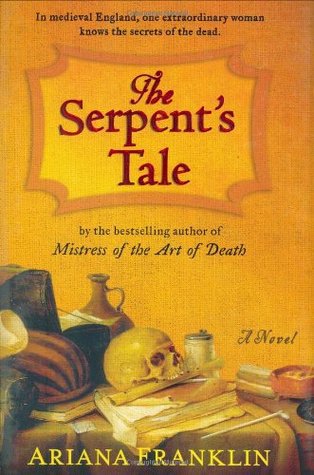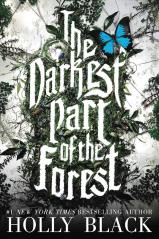By Leslie Lindsay
Inspired by the life of the real first American female matador Patricia McCormick, THE MOMENT TRUTH is a graceful historical fiction brimming with detail.
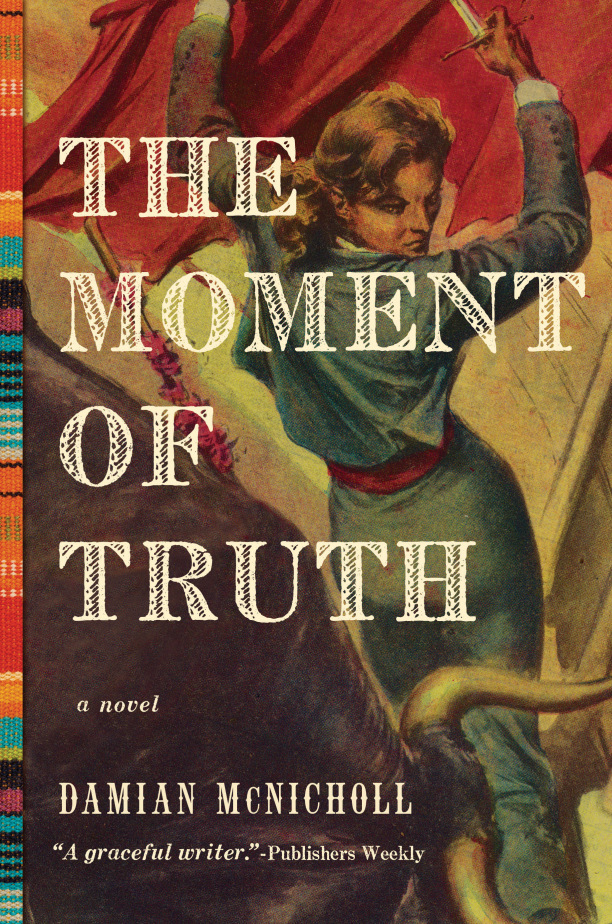
After a trip to a Mexican bullfight with her father, Kathleen Boyd is mesmerized with the art of bullfighting. She spends her childhood practicing in the family’s backyard with a red cloth and their Great Dane. Now, a discontent 19-year old art student in 1950s Texas and Kathleen still wants to make her dream happen.
I was immediately drawn into the world of Kathleen, her character well-developed and intriguing. In fact, I found myself thinking about her (and the real Patricia McCormick) when I wasn’t reading. The entire concept of the book, I thought, was entirely original. While there are plenty of historical fiction on the shelves, what brought THE MOMENT OF TRUTH (Pegasus, June 6 2017) alive for me was the time period, the unique location (set primarily in Mexico), but most of all–the unique aspirations of bullfighting from a woman’s POV.
Plus, The Houston Chronicle *just* named THE MOMENT OF TRUTH one of the top 10 books to read this June.
Damian McNicholl is a graceful, fluid writer whose words flow effortlessly. His descriptions are rich and textured. Trust me, THE MOMENT OF TRUTH is so wholly original, you don’t want to miss it.
Today, I am absolutely honored have Damian on the blog couch. So pull up a seat and grab a coffee, you’re in for a treat.
Leslie Lindsay: Damian, I’m thrilled to have you. I’ll be honest—I had never heard of Patricia McCormick, the real-life inspiration behind THE MOMENT OF TRUTH. But you got me Googling her! I learned she was originally from St. Louis, Missouri—as am I! What more can you tell us about her? Was Kathleen Boyd in THE MOMENT OF TRUTH pretty much a true composite of her?
Damian McNicholl: Patricia McCormick was an absolutely fascinating character and I didn’t know about her until I stumbled across her obituary while surfing the net. She’d been captivated by the world of the bulls ever since her father took her to a bullfight when she was a very young girl. That experience was seminal and she left for Mexico as a young woman in the forties to train to become an apprentice. The world of the bulls is, as you can imagine, very masculine and, while she did enjoy great success, she was never able to become a member of the matador’s union because no professional matador would sponsor her to take the 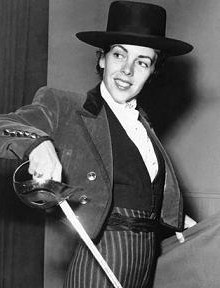 alternativa, the ceremony wherein an apprentice becomes a matador de toros. She ended up working as a secretary in California and eventually moved back to Texas where she died in 2013. At her peak, she was a celebrity both in Mexico and the US.
alternativa, the ceremony wherein an apprentice becomes a matador de toros. She ended up working as a secretary in California and eventually moved back to Texas where she died in 2013. At her peak, she was a celebrity both in Mexico and the US.
Kathleen Boyd’s character, experiences and journey in the novel does not mirror McCormick’s. The goal I had in writing the novel was toexplore the lot of women in the 1950s—the career limitations, sexism and male chauvinism and what would happen if an ambitious, talented and determined young woman wanted to do the same job as a man in the period.
L.L.: I can’t help but chuckle a bit—you’re a man from Northern Ireland with a background in law and yet you’re writing about an American woman who wants to fight bulls in Mexico. Yet you do it so well. I’m curious…what was your inspiration?
Damian McNicholl: I’m lucky in that I’ve never had difficulty writing male or female characters. I grew up in a family of three boys and two girls which helps. That’s not to say I don’t get stuck as I’m creating characters. What I do before starting a novel is do lots of research about the period I want to write about, including the social mores, habits, styles and speech until I feel comfortable. For THE MOMENT OF TRUTH, I read many books and articles on the Internet about bullfighting and women who fought bulls in the period, including Ms. McCormick’s biography (1954), which didn’t really discuss sexism or the obstacles she encountered during her rise. I looked at photos of people who lived during the period. Then I wrote out character descriptions, where they were born, physical attributes, likes, dislikes, strengths and flaws, etc. And finally I put myself in the head of Kathleen and imagine living the situation or crisis I put her in, what she’d say during a conflict and how she’d react to given situations, etc. If I wasn’t sure how she would react in a very unique situation I asked my female friends. That’s the only way I know how to try and make men and women come alive in the pages. The most important thing is to never feel intimidated about the reality you’re a man writing about a woman or vice versa.
L.L.: I can only imagine THE MOMENT OF TRUTH was pretty research-heavy in order to get the technical aspects of bullfighting just right. Can you walk us through that process?
Damian McNicholl: You’re right. I knew little about bullfighting when I started the novel and research was intense. The names and number of passes the matadors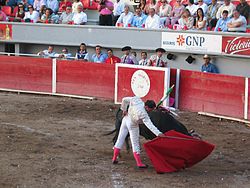 executed both with the cape and the muleta was enormous and I had to become familiar with them to the extent, when I described them, the prose flowed naturally and the technicalities didn’t interfere with the story. I started off with Ernest Hemingway’s writing and went from there. I was surprised about the number of books written on the subject and the amount of material available on the Internet. After the novel was written, I was fortunate to have Terin Miller read the parts when Kathleen is fighting in the ring and his advice on the technical aspects were invaluable. Also John Hemingway, an aficionado, Ernest Hemingway’s grandson, also read the novel and gave it a great quote. That made my day when I got that.
executed both with the cape and the muleta was enormous and I had to become familiar with them to the extent, when I described them, the prose flowed naturally and the technicalities didn’t interfere with the story. I started off with Ernest Hemingway’s writing and went from there. I was surprised about the number of books written on the subject and the amount of material available on the Internet. After the novel was written, I was fortunate to have Terin Miller read the parts when Kathleen is fighting in the ring and his advice on the technical aspects were invaluable. Also John Hemingway, an aficionado, Ernest Hemingway’s grandson, also read the novel and gave it a great quote. That made my day when I got that.
L.L.: Ultimately, bullfighting is considered an art, theater. I can see that. There’s very much a performance aspect to it. The brightly colored and beaded suit of lights, the roaring crowd. And Kathleen’s an art student. How do you see the two overlapping?
Damian McNicholl: In the 1950s when the novel is set, it was definitely viewed by many as art and/or theater rather than sport. It was seen as man pitting himself against the monster, the battle and triumph of good over evil with the poor bull representing the darkness. Kathleen is very artistic, studies art at college in Texas prior to leaving for Mexico, and immediately connects the way in which the matadors and bulls move closer and closer as they spar with one another as a form of theater. She saw this as a child during a bullfight and the flashing suits and magenta cape, the band playing and the applauding crowd. At one point, as she enters the arena as an apprentice, she also compares it to ancient Rome and the gladiators entering the Coliseum. The story takes place in an era where bullfighting was extremely popular and bullfighters were feted and adored like movie stars and musicians and it was considered a form of art. Indeed, Ms. McCormick was featured in magazines and newspapers the same way they featured actors. Today, of course, she’d be castigated for comparing bullfighting to art or theater.
L.L.: One of your secondary characters, Sally (Kathleen’s friend) is in New York City becoming a model. I think it shows a very yin-yang view of women in the 1950s. Was this deliberate on your part?
Damian McNicholl: Actually, I don’t see Sally and Kathleen as the yin-yang view of women. In the 1950s women were expected to work as secretaries, nurses and teachers until they married, whereupon their roles changed to homemakers and mothers. During the Second World War, women were ‘allowed’ to serve their country by working for the military machine, working as bomb makers and welding aircraft parts together, etc. ThinkRosie the Riveter. After the war, they were fired because the men were home again and society was patriarchal and wanted them back in the kitchens and rearing their children. You can imagine how frustrating this was to many women who wanted to stay in their jobs or who didn’t want to get married. 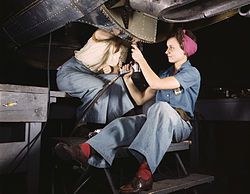
Kathleen and Sally represent women who were independent- minded and determined to have careers, albeit Sally seeks her fame in the world of glamour and Kathleen seeks hers in the bullringwith all the conflicts and jealousies it creates with men who feel threatened by a women trying to break into that masculine world.
L.L.: Speaking of the time frame—1950s—traditional and conservative view of women and their place in society, I found that several scenes made me bristle. For example, in Mexico women were expected to have a chaperon, not drive a vehicle. Fermin beats his wife, makes fun of her size, has affairs. There’s a violent rape. Kathleen doesn’t see all of her earnings. Have things changed? Have there been more women in the bullring?
Damian McNicholl: As mentioned earlier, women were expected to work in education, nursing and other low paying jobs because society believed their true vocation was as homemakers cooking for their husbands, etc. Women did not protest in the 1950s and women’s liberation groups didn’t exist. A friend in my writer’s group worked at an advertising agency in the 1950s and she told me her job and career was always viewed as secondary to her husband’s, much to her chagrin. She and her husband worked at the same firm and she had to give up her job and follow him when he was sent to work at other corporate offices throughout the US. That’s 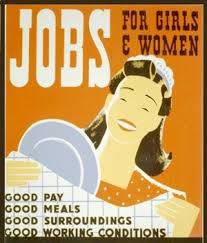 what was expected of wives. At one point she didn’t want to leave her work when her husband was sent to live in another city, but her boss, admitting she was brilliant at the job, said they would fire her if she did not go with him because her first job was to be a homemaker.
what was expected of wives. At one point she didn’t want to leave her work when her husband was sent to live in another city, but her boss, admitting she was brilliant at the job, said they would fire her if she did not go with him because her first job was to be a homemaker.
Major changes have occurred for women since the 1950s, but it would be incorrect to assume women have true equality. Women still do not get equal pay for equal work. The Equal Rights Amendment guaranteeing true equality regardless of gender has still not passed.Also, while much progress has been made, women are still sexually harassed in the work place and women are still raped, physically abused and sexually exploited today. There is much work to do still.
There are female bullfighters in Spain and Mexico today. Three of the most famous women are Karla de los Angeles, Lupita Lopez andHilda Tenorio who are now recognized professionally as matadors, something that was denied Patricia McCormick. According to news articles I’ve read, the women still encounter sexism and promoters do not hire them because of their gender. Today, the women also face the vitriol of animal rights groups who want bullfighting banned due to its cruelty.
L.L.: What is obsessing you now? What inspires you? It doesn’t have to be literary.
Damian McNicholl: I planted flowers seeds in the garden beds several weeks ago and they’re now tender shoots and I’m obsessed with keeping the rabbits at bay. They eat everything. I try to scare them and they scamper a few feet away and they look back disdainfully. We do have a family of foxes including two cute cubs living in the nearby woods and I’ve seen them on patrol at dusk. So the rabbits are increasingly wary and I’m hoping they’ll pack up their bags soon.
Nature inspires me. After a day’s writing, I love to sit out on the deck with a glass of wine and listen to the birds. We lost a lot of mature trees during Hurricane Sandy, which created glades in the woods and it’s amazing the variety of bird life that’s come to live there. There’s bluebirds, cardinals, wrens, small and large woodpeckers and morning doves. And of course we get deer and foxes. The fawns and cubs are adorable.
L.L.: Is there something I should have asked, but forgot?
Damian McNicholl: If I’m writing anything new. My next novel explores an Irish woman who emigrated to the US in the late eighties. At 19, Deirdre got pregnant and gave up her career as a musician to marry an attorney who is quite conservative and becomes increasingly difficult through the years. When she receives a bad diagnosis at thirty-nine, she evaluates her life and marriage and decides to try and reactivate her career. She must overcome obstacles from her husband and two children, including her son who disappoints his father by refusing to go to law school and who wants to marry someone her husband can never accept.
L.L.: Damian, it’s been truly illuminating. Thank you!
Damian McNicholl: Thanks so much for having me, Leslie. I enjoyed it.
To learn more about THE MOMEMENT OF TRUTH, or to connect with Damian McNicholl via social media, please see:
- Website
- Twitter: @damianmcn
- Amazon
- Barnes & Noble
- IndieBound
- BAM
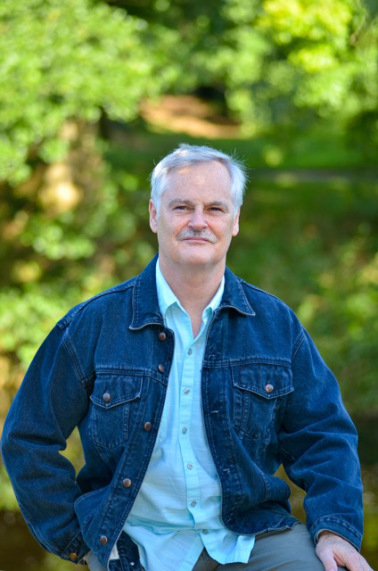 ABOUT THE AUTHOR: Damian McNicholl was born in Northern Ireland, is an attorney and the author of three novels. His critically acclaimed first novel, A SON CALLED GABRIEL (2004) was an American Booksellers Association Book Sense Pick and a finalist in the Lambda Literary Awards and independent publishers ForeWord Magazine Book of the Year Awards. THE MOMENT OF TRUTH is published by Pegasus Books and has been chosen as Houston Chronicle’s 10 Books to Read in June. Damian has appeared on CBS, WYBE Public Television, National Public Radio and other media outlets in the United States and United Kingdom to discuss his work. Pegasus Books will republish A SON CALLED GABRIEL in Fall 2017 with a new ending and Author’s Afterword. He lives in Bucks County Pennsylvania and is at work on a new novel.
ABOUT THE AUTHOR: Damian McNicholl was born in Northern Ireland, is an attorney and the author of three novels. His critically acclaimed first novel, A SON CALLED GABRIEL (2004) was an American Booksellers Association Book Sense Pick and a finalist in the Lambda Literary Awards and independent publishers ForeWord Magazine Book of the Year Awards. THE MOMENT OF TRUTH is published by Pegasus Books and has been chosen as Houston Chronicle’s 10 Books to Read in June. Damian has appeared on CBS, WYBE Public Television, National Public Radio and other media outlets in the United States and United Kingdom to discuss his work. Pegasus Books will republish A SON CALLED GABRIEL in Fall 2017 with a new ending and Author’s Afterword. He lives in Bucks County Pennsylvania and is at work on a new novel.
You can connect with me, Leslie Lindsay, via these social media sites:
- GoodReads
- Facebook: LeslieLindsayWriter
- Twitter: @LeslieLindsay1

- Email:[email protected]
LOVE IT? SHARE IT!
[Cover and author image courtesy of Pegasus Books and used with permission. Images of Patricia McCormick, muleta, and women working on aircraft in 1942 all retrieved from Wikipedia; image of 1950s-era job poster from Pinterest, no source noted. Bunnies in the garden retrieved from the bbc.com, all on 6.5.17]
Edit Share this:
